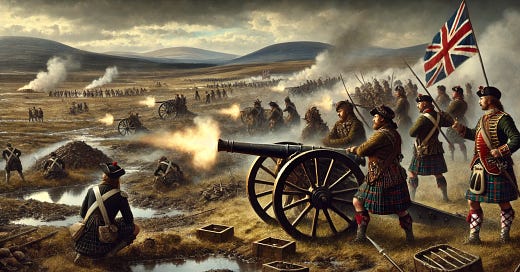Historical Significance of the Skirmish at Gogar
In the summer of 1650, during the War of the Three Kingdoms, Scotland was a battleground where the forces of Oliver Cromwell and General David Leslie faced off in a tense standoff. Cromwell's army, fresh from their march from Berwick, was eager to press its advantage against the Scots, while Leslie's troops were resolutely determined to resist. Amid this larger conflict, the Skirmish at Gogar, a small yet pivotal engagement, played a crucial role in the broader strategic picture of the time.
The skirmish took place in the parish of Corstorphine, near Edinburgh. Cromwell, known for his strategic acumen, attempted to outmaneuver Leslie by moving his forces westward with the goal of cutting off the Scots' communication lines with Linlithgow and Stirling. Leslie, however, anticipated this move and swiftly repositioned his troops to Gogar, a location characterized by its boggy and swampy terrain, which offered a strong defensive advantage. This move showcased Leslie's strategic brilliance and his ability to adapt quickly to the fluid dynamics of the battlefield.
The Battle Unfolds
The armies of Cromwell and Leslie were now in close proximity, with both sides poised for confrontation. The battlefield at Gogar, now occupied by the villas of Hanley and Gogar-Burn, was then a treacherous expanse of quagmires and bogs. Cromwell's attempts to draw Leslie into open combat were thwarted by the difficult terrain and Leslie's strategic positioning. The Scots had effectively used the natural landscape to their advantage, making it difficult for Cromwell's forces to advance without incurring significant risks.
In a bid to force an engagement, Cromwell initiated a vigorous artillery bombardment. Leslie’s forces, well-prepared and equipped with newly invented field-pieces by Colonel Wemyss, responded with equal fervor. This artillery duel, which lasted for about three hours, highlighted the technological advancements in warfare at the time. Leslie's new cannons, noted for their superior range and power, proved effective in repelling Cromwell's forces, a fact still remembered by the locals who refer to the battlefield as "the Flashes." The name "the Flashes" commemorates the intense and dramatic exchanges of cannon fire that lit up the battlefield, leaving a lasting impression on the witnesses of the time.
Strategic Implications
Despite the intense exchange of artillery fire, the skirmish did not result in a decisive victory for either side. However, its significance lay in the strategic check it imposed on Cromwell's campaign. Unable to force a breakthrough, Cromwell was compelled to retreat to Musselburgh and eventually back towards England. This retreat marked a significant setback for Cromwell, who had been eager to secure a swift and decisive victory over the Scots.
The immediate aftermath saw Leslie harassing Cromwell's retreat, leading to the Battle of Dunbar, where the Scots, hindered by lack of discipline and impulsive actions, suffered a devastating defeat. This loss allowed Cromwell to march back to Edinburgh as a victor, solidifying his control over the region. The Battle of Dunbar is often cited as a turning point in Cromwell's Scottish campaign, highlighting the consequences of the Scots' failure to capitalize on their strategic advantages during the skirmish at Gogar.
Legacy of the Skirmish
The Skirmish at Gogar, though minor in scale compared to other battles of the period, played a critical role in shaping the outcome of Cromwell's Scottish campaign. It exemplified the tactical challenges and the importance of terrain in 17th-century warfare. Moreover, it showcased the resilience and strategic acumen of General Leslie, who managed to hold his ground against one of the most formidable military leaders of the time. Leslie's ability to anticipate and counter Cromwell's maneuvers demonstrated his deep understanding of military strategy and his unwavering commitment to defending Scotland.
Today, the site of the skirmish, with its modern developments, serves as a historical reminder of the fierce struggles that once took place there. The superior artillery employed by Leslie’s forces marked a turning point in military technology, influencing future engagements and contributing to the evolving art of warfare. The advancements in artillery technology demonstrated during the skirmish had lasting impacts, as they were later adopted and refined in subsequent conflicts across Europe.
In reflecting on the Skirmish at Gogar, we gain insights into the complexities of military strategy, the impact of technological innovation, and the enduring spirit of those who fought to defend their land during a tumultuous period in Scottish history. The skirmish serves as a testament to the bravery and tenacity of the Scottish soldiers who, despite facing a formidable enemy, stood their ground and made a significant impact on the course of the war. The events at Gogar underscore the importance of strategic thinking, the effective use of terrain, and the relentless pursuit of one's goals in the face of adversity.





